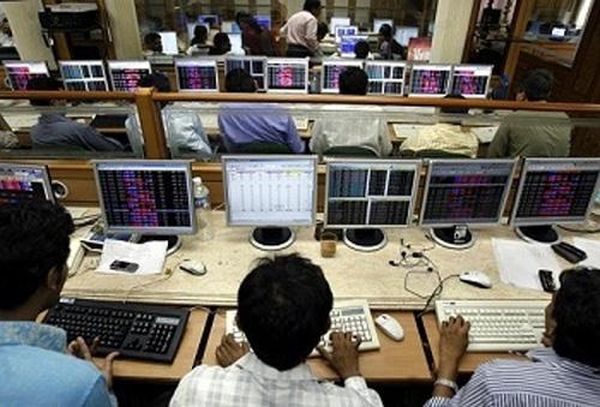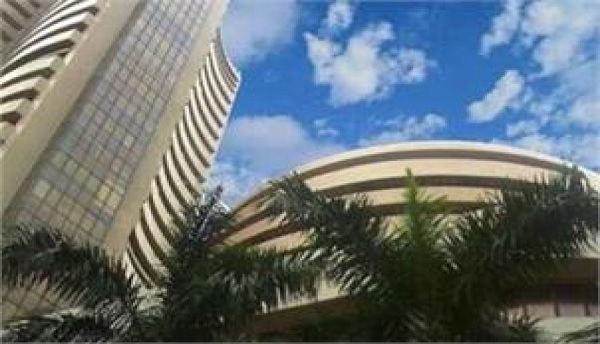
by admin | May 25, 2021 | Business, Markets, Medium Enterprise, News, Technology
 New Delhi : The demand for wearable technology is set to increase 16.7 per cent in 2017 and 310.4 million such devices will be sold globally, market research firm Gartner said on Thursday.
New Delhi : The demand for wearable technology is set to increase 16.7 per cent in 2017 and 310.4 million such devices will be sold globally, market research firm Gartner said on Thursday.
The wearable devices market would generate a revenue of $30.5 billion in 2017. Smartwatches would continue to drive the wearables market and would generate a revenue of $9.3 billion.
Apple would dominate the smartwatch market but its market share will decrease from approximately a third in 2016 to a quarter in 2021, the report said.
“Smartwatches are on pace to achieve the greatest revenue potential among all wearables through 2021, reaching $17.4 billion,” said Angela McIntyre, Research Director at Gartner, in a statement.
Revenue from smartwatches is bolstered by relatively stable average selling prices (ASPs) of Apple Watch.
Apple is expected to launch its new smartwatch in September that could enable direct cellular connectivity for interacting with its smart assistant Siri, texting and transferring sensor data when the phone or Wi-Fi is not present.
Other brands such as Asus, Huawei, LG, Samsung and Sony would sell only 15 per cent smartwatches in 2021.
—IANS

by admin | May 25, 2021 | Economy, Markets, News
 Mumbai : Positive global cues pushed the key Indian equity indices — the NSE Nifty 50 and the BSE Sensex — higher during mid-afternoon trade session on Wednesday.
Mumbai : Positive global cues pushed the key Indian equity indices — the NSE Nifty 50 and the BSE Sensex — higher during mid-afternoon trade session on Wednesday.
According to market observers, healthy buying in pharma, banking and IT sector stocks supported equity indices’ upward trajectory.
The BSE Sensex and NSE Nifty opened higher on Wednesday against their respective previous session’s close. The Indian rupee also opened on a strong note against the US dollar.
At 1.00 p.m., the 30-scrip Sensitive Index (Sensex) gained 147 points or 0.47 per cent.
The wider 51-scrip Nifty of the National Stock Exchange (NSE) traded higher by 39.85 points or 0.41 per cent at 9,805.40 points.
The Sensex of the BSE, which opened at 31,407.47 points, traded at 31,439.23 points (at 1.00 p.m.), up 147.38 points or 0.47 per cent from Friday’s close at 31,291.85 points.
The Sensex touched a high of 31,494.16 points and a low of 31,379.25 points in the trade so far.
“The benchmark indices opened higher on Wednesday tracking positive global cues after each of the three major indices on Wall Street posted their best one-day percentage gains in over a week ahead of the annual meeting of central bankers in Jackson Hole on Friday,” Dhruv Desai, Director and Chief Operating Officer of Tradebulls, told IANS.
“Market breadth was positive… Advance-decline ratio stood at 32 and 19 respectively.”
—IANS

by admin | May 25, 2021 | Economy, Markets, News
 By Rohit Vaid,
By Rohit Vaid,
New Delhi : Global cues and direction of foreign funds’ flows are expected to affect the movement of key equity indices during the upcoming week, market observers opined.
“With earnings season almost over, markets would now focus on global risks and political developments from the US, valuations, domestic flows and stock- or sector-specific developments,” Devendra Nevgi, Chief Executive of Zyfin Advisors, told IANS.
Apart from global cues, the direction of foreign fund flows are expected to influence the trajectory of the equity indices.
“On YTD (year-to-date) basis India has performed well, led by strong liquidity and reform. But in the recent 1 to 3 months, the inflows from FIIs (Foreign Institutional Investors) have reduced which may impact the performance in the near-future,” said Vinod Nair, Head of Research, Geojit Financial Services.
“FIIs have started to pull out money from the domestic market — till date the outflow is Rs 7,628 crore.”
Figures from the National Securities Depository (NSDL) revealed that foreign portfolio investors (FPIs) divested equities worth Rs 6,804.47 crore, or $1.06 billion, during the week ended August 18.
Provisional figures from the stock exchanges showed that FIIs sold stocks worth Rs 5,892.1 crore, while DIIs bought scrip worth Rs 4,369.26 crore during August 14-18.
Currency-wise, the Indian rupee, which closed the week ended August 18 on a flat note at 64.14 to a US dollar, is expected to be volatile and can potentially erode investors’ risk-taking appetite.
“Over the near-term, we need to watch how the risk-aversion plays out in the equity markets. Volatility has begun to inch higher in stocks and bonds, which is negative for risk assets like equities,” Anindya Banerjee, Deputy Vice President for Currency and Interest Rates with Kotak Securities, told IANS.
“Positioning remains stretched as speculators and investors overly long in risk assets like EM equities and DM equities. When positioning remains so stretched, any excuse can trigger an unwind. It can be as innocuous as the Korean peninsula or another of Trump’s foot-in-the-mouth moments.”
“Therefore, over the near-term, we remain cautious on the rupee. Over the next week a range of 63.90 and 64.30 can be seen in the pair,” Banerjee added.
On technical levels, the underlying trend in the NSE Nifty remains bearish with a downside expected.
“Technically, while the Nifty has pulled back this week, the underlying trend remains down,” Deepak Jasani, Head, Retail Research, HDFC Securities, told IANS.
“The downtrend is likely to resume once the immediate support of 9,783 points is broken. Pullback rallies could find resistance at 9,866 points and 9,933 points.”
Last week, key equity indices — the Sensex and the Nifty50 — made gains on the back of easing global geo-political tensions and healthy buying in realty, metal and FMCG stocks.
Consequently, the 30-scrip Sensitive Index (Sensex) of the BSE gained 311.09 points or 0.99 per cent to close at 31,524.68 points.
Similarly, the Nifty50 of the National Stock Exchange (NSE) gained 126.6 points or 1.30 per cent to close at 9,837.40 points.
(Rohit Vaid can be contacted at rohit.v@ians.in)
—IANS

by admin | May 25, 2021 | Corporate, Corporate Buzz
 By Rohit Vaid
By Rohit Vaid
Mumbai : (IANS) Expectations of an interest rate cut, coupled with healthy foreign fund inflows and value buying, buoyed the Indian equity markets during the just concluded weekly trade.
The Indian equity markets posted their fourth consecutive weekly gains during the week ended March 23. By some estimates, the domestic equity markets have delivered 10-12 percent in positive returns over the last one month alone.
In sync with headline indices, broader markets too ended higher. They rose by 1.5 percent, led by buying in high beta stocks.
Healthy buying was witnessed in reality, government banks, capital goods, metals and cement stocks.
However, gains were capped by negative global events like increased chances of a US rate hike and the Brussels terror attacks.
Further, a weak rupee and caution ahead of the derivatives expiry weighed heavy on the equity markets. The key Indian equity indices had declined for the better part of the truncated week.
The Indian equity markets were closed from March 24-25, on account of Holi and Good Friday.
The barometer 30-scrip sensitive index (Sensex) of the Bombay Stock Exchange (BSE) gained 385 points or 1.54 percent to 25,337.56 points during the just concluded weekly trade.
Similarly, the wider 50-scrip Nifty of the National Stock Exchange (NSE) edged-up by 112.15 points or 1.47 percent to 7,716.50 points.
Vaibhav Agarwal, vice president and research head at Angel Broking, pointed out that traders remained reluctant to maintain their positions over the last weekend of the current financial year.
“Some selling pressure was witnessed, but the benchmarks managed to close in the green in all the sessions on the back of a late recovery in the last two sessions,” Agarwal told IANS.
Moreover, investor sentiments were buoyed on hopes that the Reserve Bank of India (RBI) will ease its lending rates in the upcoming monetary policy review.
Investors expect that the union budget’s fiscal prudence measures, reduction in interest rates on small savings and lower inflation will allow the RBI to further ease key lending rates.
The RBI will conduct its first bi-monthly monetary policy review for 2016-17 on April 5.
“Government authorities seem to be driving hard the point that now it is the central bank’s turn to act,” elaborated Pankaj Sharma, head of equities for Equirus Securities.
Nitasha Shankar, vice president for research with YES Securities stated that headline index Nifty approached its upper end of the downward channel which is placed at 7,880 points.
“A breakout from this channel could trigger a bullish trend reversal putting a halt to the extended ongoing corrective phase. Failure to do so may continue the complex corrective pattern,” Shankar noted.
According to Shankar, during the just concluded week, all major sector-based indices made gains.
“Reality, PSU banks, metal and cement indices outperformed rest of the market,” Shankar informed.
Nevertheless, the domestic positive cues were countered by global headwinds like the Brussels terror attacks.
“Global markets extended gains and are inching back from an initial sell off that followed deadly attacks in Brussels,” Dhruv Desai, director and chief operating officer, Tradebulls, told IANS.
“The fourth consecutive positive week shows markets moving in a strong up trend. Advance and decline still in the favour of bulls.”
In addition, investors were seen hesitant to chase prices due to the heightened chances of a US rate hike next month.
A hike in the US interest rates is expected to lead away Foreign Portfolio Investors (FPIs) from emerging markets such as India.
Anand James, co-head, technical research desk with Geojit BNP Paribas Financial Services, told IANS: “Hawkish comments from US Fed officials set the tone for the week, inviting the investors to cash in on the steep rallies of the previous weeks.”
Besides, a weak rupee kept investors unnerved and capped gains through the week’s trade.
“The Brussels airport blast did prompt profit booking from risky assets, though the impact was sustained in US dollar, which rose due to its appeal as a safe haven asset, pushing rupee towards the 67 mark,” James cited.
On a weekly basis, the rupee weakened by 12 paise to 66.62-63 (March 23) against a US dollar from its previous close of 66.50-51 (March 18) to a greenback.
The rupee weakness was attributed to a strong US dollar. The US dollar has strengthened on the back of increased chances of a hike in US interest rates in April.
In contrast, an increase in foreign fund inflows supported prices and lifted equity markets.
The National Securities Depository Limited (NSDL) figures showed that the FPIs bought Rs.6,340.82 crore or $952.79 million in the equity and debt markets from March 21-23.
Data with stock exchanges disclosed that the FPIs invested in stocks worth Rs.3,468.68 crore during the week under review.
Conversely, the data showed that domestic institutional investors (DIIs) sold stocks worth Rs.2,571.72 crore.
Sharma credited the healthy market returns on the fresh inflows from foreign investors.
“We think the most important change which has been driving this market performance is linked to fresh inflows from foreign investors,” Sharma explained.
“As risk appetite increased among global investors, they started pumping in more money into emerging markets, as suggested by close to $2 billion of net inflows into Indian markets by foreign investors.”

 New Delhi : The demand for wearable technology is set to increase 16.7 per cent in 2017 and 310.4 million such devices will be sold globally, market research firm Gartner said on Thursday.
New Delhi : The demand for wearable technology is set to increase 16.7 per cent in 2017 and 310.4 million such devices will be sold globally, market research firm Gartner said on Thursday.

